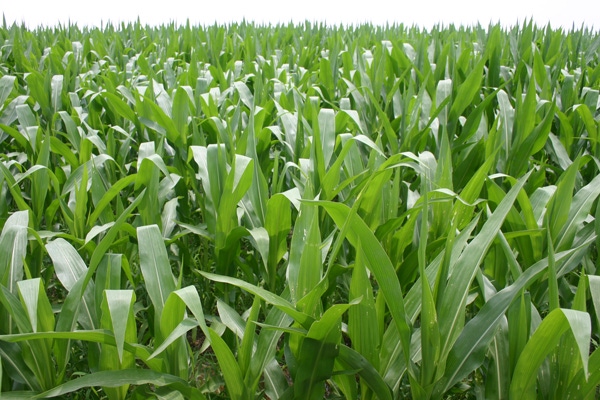
Southern Rust spores have arrived in a three-county area of the Upper Texas coast and many growers in the region are now hoping for clear skies as corn slowly dries down before harvest commences in the weeks ahead.
The corn crop in Jackson, Wharton and Matagorda Counties has benefited from early spring rains followed by a drying period and more rain in May and early June. While the rains have helped plants develop, combined with moderate morning dews, it has created leaf moisture, a condition ripe for the growth of rust spores.
Dr. Thomas Isakeit, Professor and Extension Plant Pathologist for Texas AgriLife in College Station, reports early detection of Southern Rust along the Upper Coast first began to surface during the first week in June, but he says early signs on lower leaf corn appeared in late May. A period of dry weather this week, however, is keeping the Rust from spreading up the plant.
“Spores from the south, probably Southern Mexico, were carried by the wind until they found a home. Moist leafy material represents the perfect environment for the spores to germinate, and we are now seeing some Southern Rust move up the plants in these three counties,” said Isakeit.
Southern Rust has also been reported in Rio Grande Valley corn, though “not widespread” and under control because of dry weather.
Southern Rust is more common in Louisiana and around the coast to Florida, but because conditions must be just right for germination, it becomes a problem for coastal Texas growers about every five years or so. Isakeit says along the Upper Coast, rust is not widely spread across the region and can be found in one field and not the next.
“It has a lot to do with the hybrids planted in our test plots and in the fields. Some hybrids are more resistant to Southern Rust than others. The same is true about how the final yield will be for infected corn. That’s a variable we don’t have an answer for currently. I know of one instance where an infected crop actually yielded better with the rust condition than other varieties in the same field. In other cases yields have suffered as much as 45 percent. But we need to conduct trials on the newer varieties of hybrids before we can determine which is best from a resistance standpoint,” he adds.
Dryland less susceptible
He says dryland corn appears to be less susceptible to rust, perhaps because pivot irrigation better maintains a moist leaf environment.
According to Isakeit the symptoms of southern rust, caused by the fungus Puccinia polysora, are slightly raised, circular, orange pustules that are mainly on the upper sides of leaves. Pustules can also occur on stalks and husks. Early in the season, pustules are on the lower foliage and they progress to foliage in the upper canopy during the growing season.
“Applied early enough, fungicides have proven successful in helping to fight the fungus. There are no thresholds for economical use of a fungicide at this stage. The benefits of an application will be affected by hybrid susceptibility, timing of infection, and environmental conditions that support disease development,” he warns.
He says producers need for the leaves to dry out until the corn can be harvested. If this happens, then yield loss will be held to a minimum. But the more rain that falls, the more costly the yield damage will be.
“Since the turn-around time from infection to new spores with this fungus ranges from 9 to 12 days, my guess is that a fungicide application at silking may have had the greatest impact on reducing disease development.”
In a report issued by Isakeit concerning Southern Rust along the Upper Coast, the pathologist says leaf wetness (rain or dew) is necessary for infection by wind-blown spores and the optimal conditions for infection are 16 hours of dew at 80 degrees. But he warns the fungus can infect corn over a temperature range of 54 degrees to 97 degrees. The good news is that the fungus has a limited host range (corn) and can’t survive without a living host, so it does not overwinter on crop debris nor does it remain present in the soil.
About the Author(s)
You May Also Like




